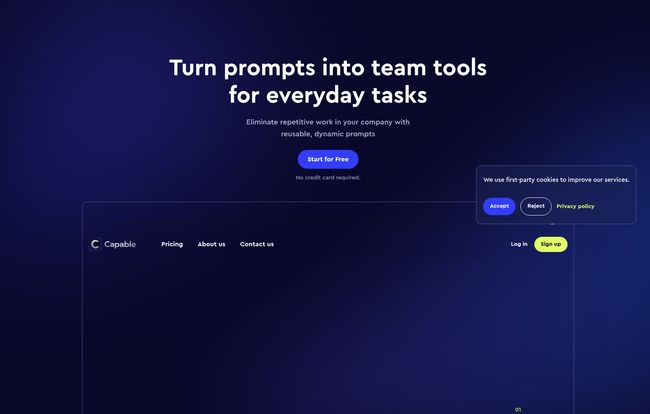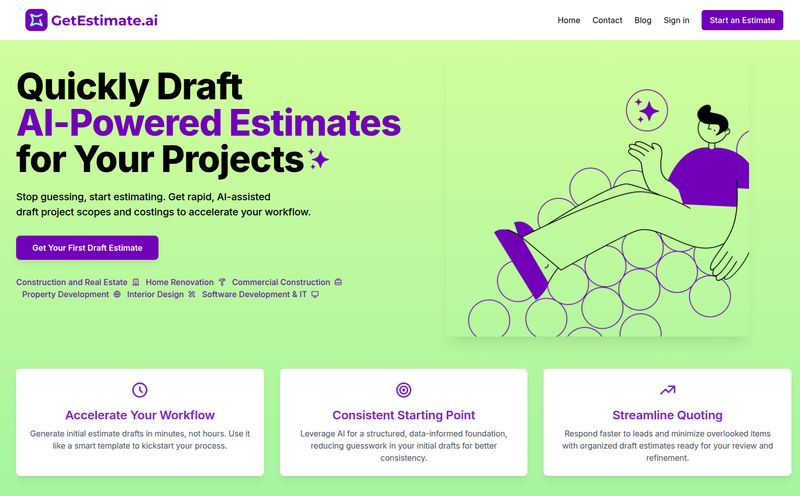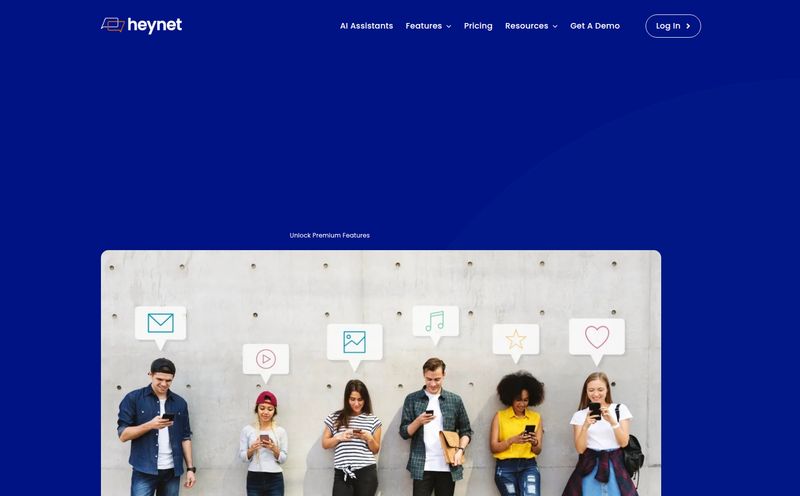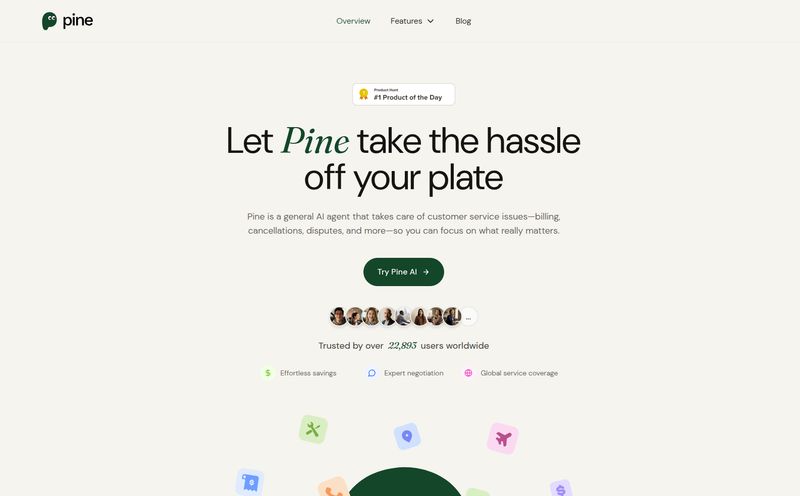We’re all using AI. If you're in marketing, SEO, or content, ChatGPT (or a cousin of it) is probably open in one of your browser tabs right now. And we all have that Google Doc or Slack channel... you know the one. The chaotic graveyard of half-baked prompts, where someone once found the magic words to get the perfect blog outline, but nobody can find it anymore.
It’s a digital junk drawer. My team’s was, anyway. We were spending more time trying to find and tweak old prompts than it would've taken to just write the dang thing from scratch. The promise of AI productivity was getting lost in the chaos of, well, us. It felt like we had this incredible new power tool, but everyone was using it differently and nobody bothered to write down the instructions.
Then I stumbled upon a platform called Capable. At first, I thought, “Great, another AI tool.” But this one’s different. It’s not another writer or image generator. It’s a tool for taming the beast. It's a system for turning those one-hit-wonder prompts into reusable, shareable, team-friendly assets. And frankly, it's about time.

Visit Promtify
So, What is Capable, Really?
Think of Capable not as the chef, but as the recipe book. It’s a platform designed to help you and your team build, store, and share dynamic AI prompt templates. Instead of copy-pasting a giant block of text and manually swapping out keywords, you create a template with variables. It’s like mail merge for the AI age.
You write one killer prompt—say, for creating a batch of SEO-optimized meta descriptions—and you create placeholders for things like {product_name}, {main_keyword}, and {target_audience}. From then on, anyone on your team can just fire up the template, fill in a few fields, and get a consistent, high-quality result every single time.
It’s about systemizing your creativity, which sounds like an oxymoron but is absolutely critical if you want to scale any kind of content production.
Why Your Team's Ad-Hoc Prompting is Killing Productivity
I’ve seen it happen. A junior SEO specialist gets amazing results from a prompt they crafted. They share a screenshot in Slack. It gets a few 🎉 emojis and is promptly forgotten. Two weeks later, a senior content strategist spends an hour trying to create the exact same type of output, completely unaware of the prior success.
This is the default state for most teams, and it leads to:
- Inconsistent Quality: The tone and structure of your AI-assisted content is all over the place because everyone’s “whispering” to the AI differently.
- Wasted Knowledge: Your team's best prompting techniques are siloed. They live and die in individual chat histories.
- Painful Onboarding: How do you teach a new hire the “right” way to prompt for your brand? With a link to a messy, 100-page Google Doc? Good luck with that.
A shared prompt library turns this tribal knowledge into a documented, accessible process. It’s a single source of truth for how your team interacts with AI. Game-changer. Seriously.
A Look at Capable’s Core Features
Okay, so it organizes prompts. But how does it actually work? I poked around the platform, and a few things really stood out to me.
The Dynamic Prompt Template Builder
This is the heart of the whole thing. Creating a template is surprisingly straightforward. You write your prompt and where you would normally put a placeholder, you just add a variable. What's cool is that you can define what kind of variable it is. It can be simple text input, a long-form paragraph, or even a custom dropdown list you create.
For my SEO brain, the gears started turning immediately. You could create a custom list for `[Tone of Voice]` with options like 'Witty', 'Professional', 'Casual', 'Empathetic'. Or a list for `[Content-Type]` with 'Blog Post Intro', 'FAQ Section', 'YouTube Title Ideas'. This little feature adds a layer of standardization that prevents people from going off-script.
Team Collaboration and Workspaces
This is what separates it from just keeping notes on your own. Capable is built around the idea of a shared Company Workspace. You build the templates, and everyone on the paid plan has access. You can even set permissions, which is handy if you want to keep certain high-level strategy prompts limited to specific people.
No more "Hey, can you send me that prompt for competitor analysis again?" It's just... there. In the library. Ready to go. This single feature probably saves a dozen Slack messages a day.
Bring Your Own API Key (BYO-Key)
This is a big one for power users. While Capable offers some free responses, the real magic happens when you connect your own OpenAI API key. Why is this so great? Because then you aren't limited by Capable's usage caps; you're only limited by your own OpenAI billing. For teams doing high-volume work, this is almost always cheaper and gives you unlimited use of the templates you've built.
I appreciate when platforms do this. It shows they're confident in the value of their interface and workflow, not just trying to be a middleman for AI credits. It lets you use their fantastic organizational tool on top of the raw power of GPT.
The All-Important Question: Capable's Pricing
Alright, let's talk about the cost. Every new SaaS tool has to justify its spot in the company credit card statement, right? Capable has a pretty clear pricing structure that seems to make sense for its target users.
| Plan | Price | Best For | Key Features |
|---|---|---|---|
| Personal | $0 / Forever | Solo users, testers, individuals | Personal use, connect your own AI key, up to 50 AI responses. |
| For teams | $8/user/month (annual) or $16/user/month (monthly) | Most small to mid-sized teams | Everything in Personal, plus shared workspace, all templates, unlimited responses, permissions. |
| Enterprise | Custom | Large organizations with specific needs | Private deployment, custom contracts, API access, higher security. |
The free plan is genuinely useful for getting a feel for the tool. You can build templates and see how it works. But the real value is unlocked in the For teams tier. At $8 per user on the annual plan, that's a pretty small price to pay for the amount of time and inconsistency it can eliminate. If it saves each team member even an hour or two a month, it's paid for itself.
The Not-So-Perfect Parts
No tool is perfect, and it’s only fair to point out a few things. I'd call these trade-offs more than deal-breakers. First, its main power comes from connecting to OpenAI's API, so your results are still dependent on OpenAI's models. Capable is the steering wheel and dashboard; OpenAI is the engine.
Also, some of the most exciting features, like adding your own knowledge base to inform the AI, are listed as "Coming soon." I'm really looking forward to that, as it would be a massive leap in capability, but it’s not here just yet. And of course, to get the collaborative benefits, you have to be on a paid plan. But that's pretty standard stuff.
My Final Take: Is Capable Worth It?
For me, the answer is a pretty solid yes. Especially for teams.
If you're a solo user who just casually uses ChatGPT, you can probably get by with a well-organized notes app. But if you are part of a team—a marketing agency, an in-house SEO department, a product group—and you're trying to integrate AI into your workflow in a scalable, consistent way, then a tool like Capable moves from a 'nice-to-have' to a 'how-did-we-live-without-this'.
It addresses the single biggest operational challenge of using generative AI in a business setting: chaos. It brings order, collaboration, and efficiency to the table. It’s an investment in a smarter workflow, and in my book, that’s always money well spent.
Frequently Asked Questions about Capable
What exactly is a dynamic prompt template?
- It's a pre-written AI prompt that includes variables or placeholders. Instead of re-writing the whole prompt for each new task, you just fill in the variables (like a name, a topic, or a keyword), and the template does the rest, ensuring consistent and targeted outputs.
Can I really use Capable for free?
- Yes, the Personal plan is free forever. It's designed for individual use and lets you create your own templates and connect your own OpenAI key. It has a limit of 50 AI responses through their system, but it's a great way to try everything out.
How does sharing prompts with a team work?
- On the 'For teams' plan, you get a central Company Workspace. Any template created there is instantly available to everyone on your team. You can also set specific permissions to control who can view or edit certain templates.
What does 'Connect your own AI' mean?
- This feature allows you to plug your personal or company's OpenAI API key directly into Capable. It means you get unlimited AI responses through the Capable interface, and you are billed directly by OpenAI for your usage, which can be more cost-effective for heavy users.
Is there a refund policy if I don't like it?
- According to their pricing page, the 'For teams' plan comes with a 30-day refund policy, which gives you a good amount of time to see if it’s a fit for your team’s workflow.
Is my data secure with Capable?
- Capable takes security seriously, offering features like custom permissions. For companies with very strict data requirements, the Enterprise plan offers advanced security options like private deployment and running the tool within your own data environment.
Final Thoughts
The wave of AI isn't slowing down, and the companies that win will be the ones that learn to use these tools effectively and systematically. Flying blind with random prompts is a strategy for yesterday. Building a shared brain, a collective intelligence for how your team communicates with AI... that's the future. And tools like Capable are a fantastic step in that direction.



